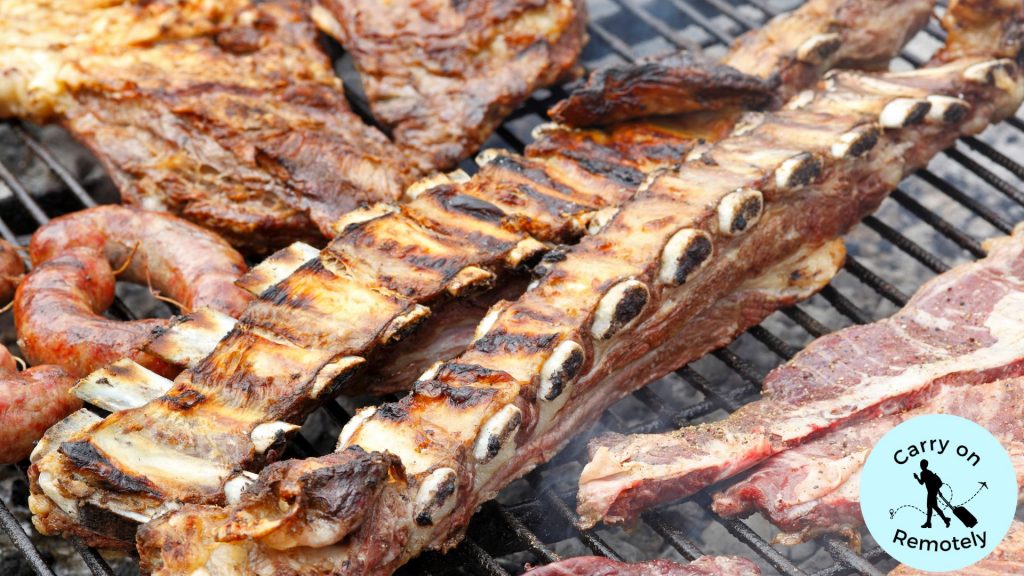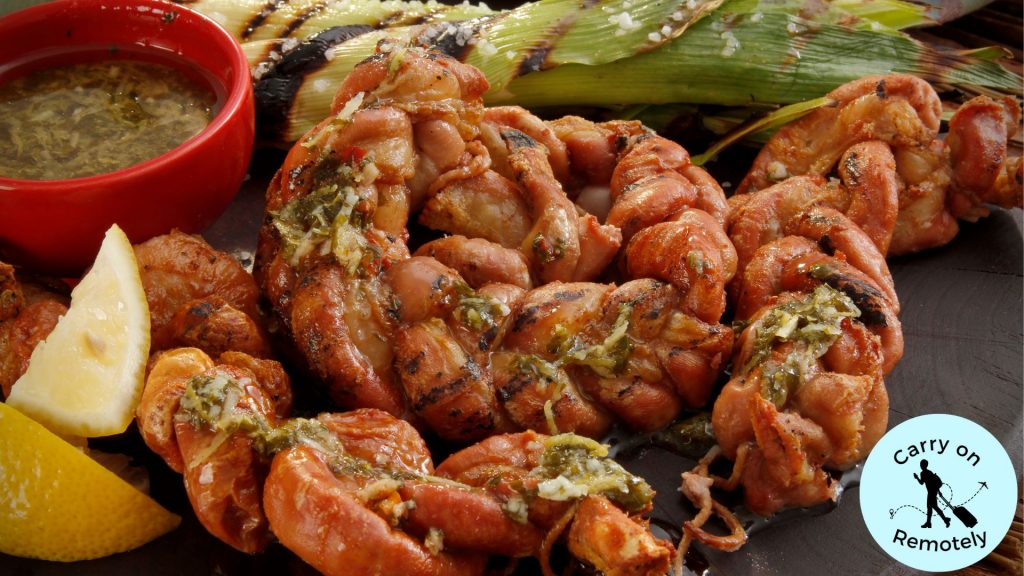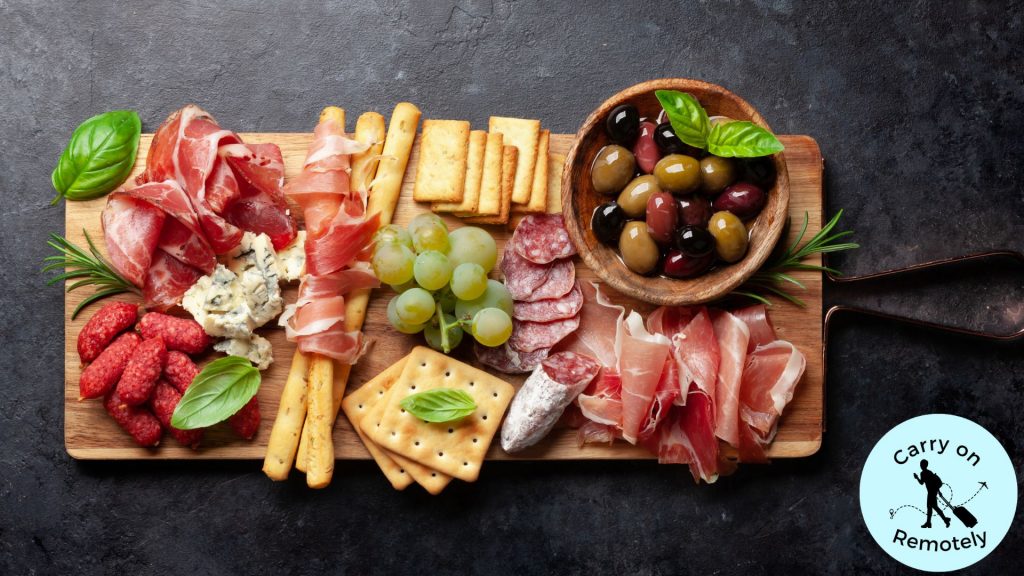Buenos Aires is famous for many different reasons, from historical figures such as Eva Perón, to artists like Astor Piazolla and Jorge Luis Borges.
It has popular sights like La Boca with its colourful houses and immigrant history in El Caminito, the Pink House which is the government building right across the famous Plaza de Mayo square.
In the heart of Buenos Aires there’s the widest avenue in South América, 9 de Julio avenue, and from here you can see the Obelisk and Corrientes avenue that is the ‘theatre’ street.
From Río de la Plata in the 19th century, tango is an Argentine musical style resulting from the fusion between African culture and the local cultures of the gauchos and native peoples, as well as the contribution of European immigrants -mainly Spanish and Italian- and from the Middle East.
This makes tango another remarkable feature to visit Buenos Aires. You can view 7 tango shows in Buenos Aires here.
In Buenos Aires you can also discover the wide and rich gastronomy in the aristocratic or hipster neighbours like Palermo, Recoleta and San Telmo.
If you want to know more about Buenos Aires, I recommend listening to Rick Steves’ podcast about Buenos aires
Where is Buenos Aires located?
Buenos Aires is the capital of Argentina and it’s located in South América, south of Brazil and West of Chile.
The city of Buenos Aires is the main city in the country and has more than 14 million people. It’s also one of the most famous cities of Latin América.
What is the nickname given to Buenos Aires?
Buenos Aires is also nicknamed The Paris of South America because of the influence of French architecture in the construction of its buildings.
Between 1890 and 1920, more than one hundred palaces were built on Alvear Avenue, one of the most aristocratic avenues in the city.
The Duhau Palace, located at Alvear 1661, was built in the early 1930s following the neoclassical lines of French influence. In 2006, the Duhau-Park Hyatt Hotel, one of the most exclusive in the country, opened there. Nowadays you can also book your stay day and enjoy its architecture, gardens, spa and private art collection.
How expensive is Buenos Aires?
Argentina currently has two parallel currencies. The Argentine peso (the official currency) and the unofficial Argentine peso (whose value is marked by the nation’s black market exchange rate, known locally as the “dólar blue”)
So, if you are a visitor travelling with USD dollars or euros, the exchange rate is in your favour and you’ll find the city very affordable to visit.
However, if you prefer to have a more luxurious stay, there are more expensive neighbourhoods and restaurants that are similar to those in Europe and even the USA.
👉 To understand more about this topic, you can read this article here.
What food is Buenos Aires, Argentina known for?
Argentina’s cuisine has the essence of the immigrants who lived in Buenos Aires in the 19th century and enriched the food culture with recipes from Spain, Italy and Germany. Later, the Andean cuisine from neighbouring countries was added.
The typical dishes are characterised by their variety of meats: veal, pork and, in particular, beef, as can be seen in the popularity of Argentinean steakhouses all over the world.
Pizza was brought by Italian immigrants at the end of the 19th century but, over the years, it adopted an authentic porteño essence.
People prefer it with a thick though, with lots of cheese and if it has onion or ham and bell peppers, even better. Then, add a pinch of oregano, olives and the pizza is ready!
What is ‘Asado’?
This typical Argentinian dish consists of different pieces of grilled meat. The technique varies according to the region, it is customary to hang the meat on an iron grill in the ground and place it around the fire although it is common to see it on grills.
The type of meat usually used is beef or lamb, although it is also common to find grilled fish. The cut is also important, being the rib the most popular.

What is ‘Chimichurri’?
It’s a sauce made from finely chopped parsley, oregano, onion, garlic, chilli flakes, olive oil and a touch of acid, such as lemon or vinegar, chimichurri is the favourite condiment of Argentines.
It is used as a marinade, but its greatest use is topping grilled meats and lots of other savory foods throughout the country.

What are ‘Chinchulines’?
Of Andean origin, this is the name given to the small intestine of the beef, its preparation is done over a grill of wood embers.
Although it takes time to grill it, it is the most prized dish to serve in an Argentine asado. In Patagonia, this dish has its history as they used to eat all parts of the animal to survive in the winter.

What is ‘Choripán’?
This is a very typical dish of Argentine gastronomy, it consists of grilled chorizo stuffed between two pieces of bread. To give it more flavor, it can also be served with chimichurri sauce.
This typical dish is originally from Rio de la Plata, Argentina, although it can now be found in other Latin American countries, it’s definitely part of Argentina street food culture.
What are ‘Alfajores de maicena’?
This delicious Argentine sweet was introduced to the country during pre-Columbian times. They are cookies made with butter, egg, sugar, cornstarch, vanilla extract and coconut which are then finished with a milk filling. This filing is called ‘dulce de leche’.
The filling is flavored with caramel, which makes it one of the most popular sweets in Argentina. Once the cookies are baked, the alfajores are coated with chocolate or glazed.

What are Argentine ‘Empanadas’ made of?
Of Spanish heritage, this dish has many varieties depending on the region. One of the most popular is meat, which is seasoned with onion and mixed with cooked egg and olives.
It’s basically a baked or deep fried pie stuffed with meat, chicken, vegetables, tuna or cheese. You can find empanadas in pizzerias or restaurants in Buenos Aires.
They are called tucumanas and can sometimes contain raisins. Chicken, ham, cheese or vegetables are some of the most common and easy to find ingredients. Popular empanadillas are the cordobesa variety, with a sweet and sour taste as they have sugar sprinkled on top.
Have you already eaten Argentine empanadas?

What is Argentine ‘Picada’?
This typical Argentinian appetiser is made up of ham, cheese, blood sausage, mortadella, olives, pâté or pizza, among others, which are usually accompanied by bread.
It is perfect to share with friends and family in group events. Due to the Italian and Spanish influence of immigration, this dish has its origin in the antipasto in Italy and sausages in Spain.

Best food Buenos Aires
Some of Buenos Aires most famous gastronomic areas are Palermo, Puerto Madero, Recoleta and San Telmo, neighbourhoods where you can find the nine restaurants listed in “Latin America’s 50 Best Restaurants 2021” and many more options.
Top 5 List of restaurants in Buenos Aires:
Don Julio – An institution in Buenos Aires, Don Julio has been building its stellar reputation since owner Pablo Rivero opened the steakhouse in Palermo more than 20 years ago in 1999. The restaurant is an embodiment of Argentine culture: sustainably farmed beef meets the embers on the traditional grill, accompanied by an outstanding wine list and friendly hospitality. It defined a new style of luxury, culminating in Don Julio being crowned The Best Restaurant in Latin America 2020. Visit here.
Chila – Since taking over the Chila kitchen in 2016, Bargero has ensured that Argentina’s superlative vegetables receive the same (or at least similar) billing to its celebrated meat. The menu changes 10 times annually, referencing micro seasons, growing periods and seafood sustainability to create a restaurant that’s is continually raising its stature in the global gastronomic consciousness. Visit here.
El Baqueano – Chef Fernando Rivarola routinely scours Argentina for unusual smallholders and producers in his quest to unearth native ingredients – so you can expect creative dishes such as llama carpaccio with three-colour quinoa or alligator gyoza on the menu. Always a friendly and relaxed place to eat, El Baqueano has recently undergone an extensive renovation, with its new home featuring not only a dining room but also an R&D department, a private events room and Argentina’s first gastronomic library. Visit here.
Aramburu – In 2018, Aramburu relocated to the Recoleta neighbourhood, further expanding to the top floor in 2020. The new space is decorated with a vertical garden, features an R&D laboratory with a test kitchen and a private room with a table seating 12. The spectacular 20-course tasting menu takes diners on a journey traversing the restaurant’s floors and is accompanied by wines selected from the restaurant’s recently added cellar. Visit here.
Mishiguene – Mishiguene, which means crazy in Yiddish, honours Argentina’s Jewish immigrant heritage by reinventing Ashkenazi, Sephardic, Israeli and Middle Eastern cooking. Here, nouvelle techniques are applied to old world recipes, using the highest-quality ingredients possible. Chef Tomás Kalika spent years learning Middle Eastern flavour profiles and many of Mishiguene’s dishes were inspired by personal events in Kalika’s life, including a Russian-Polish borscht and spit-roasted Moroccan lamb. Visit here.
Watch this video to learn about:
- A traditional restaurant with no menu in La Boca neighbourhood
- A local restaurant where they make two unique types of vermouth to eat with the typical Argentine meat dishes
- What’s considered the most undrinkable drink, fernet, a typical Argentine digestive and pizza.
- And lastly, a chorizo hot-dog to share a bit of Argentine street food culture.

